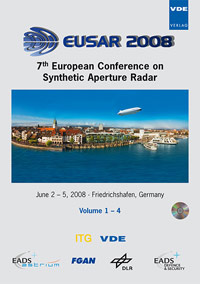Polarimetric Temporal Stability of Urban GB-SAR Measurements
Konferenz: EUSAR 2008 - 7th European Conference on Synthetic Aperture Radar
02.06.2008 - 05.06.2008 in Friedrichshafen, Germany
Tagungsband: EUSAR 2008
Seiten: 4Sprache: EnglischTyp: PDF
Persönliche VDE-Mitglieder erhalten auf diesen Artikel 10% Rabatt
Autoren:
Pipia, Luca; Fabregas, Xavier; Lopez-Martinez, Carlos; Aguasca, Albert; Mallorqui, Jordi J. (Universitat Politècnica de Catalunya, Barcelona, Spain)
Marturià, Jordi (Institut Geològic de Catalunya, Barcelona, Spain)
Inhalt:
The introduction of Polarimetry in Remote Sensing SAR applications opened new investigation branches mainly focused on the extraction of targets’ physical parameters. Up to this moment, the approach has been focused on the analysis of few PolSAR datasets. Owing to the lack of fully polarimetric SAR sensors boarded on satellite platforms, a study of the evolution of targets polarimetric behavior along the time axis has never been performed. From this point of view, the recent satellite missions are expected to fulfill this gap in the next few years. An alternative solution is represented by ground-based SAR sensors. Despite their capability to observe an area of limited extension, they provide a ground-resolution comparable to the airborne and to the new satellite systems. Moreover, they have no constraints in terms of revisit time and they are not affected by common errors such as synthetic aperture uncertainty or coregistration imprecision. In this work, an analysis of the polarimetric temporal stability of targets selected in an urban environment during an observation period of approximately one year is carried out. In order to quantitatively describe the backscattering behavior of urban targets along the time-axis, the estimation of the polarimetric entropy H in the time domain is proposed. Simulations are first introduced to show the capability of this second order descriptor to detect non-stationary behaviors of temporal samples. Then, real data are analyzed and a comparison between the diurnal and nocturnal monitoring cases is finally carried out.


